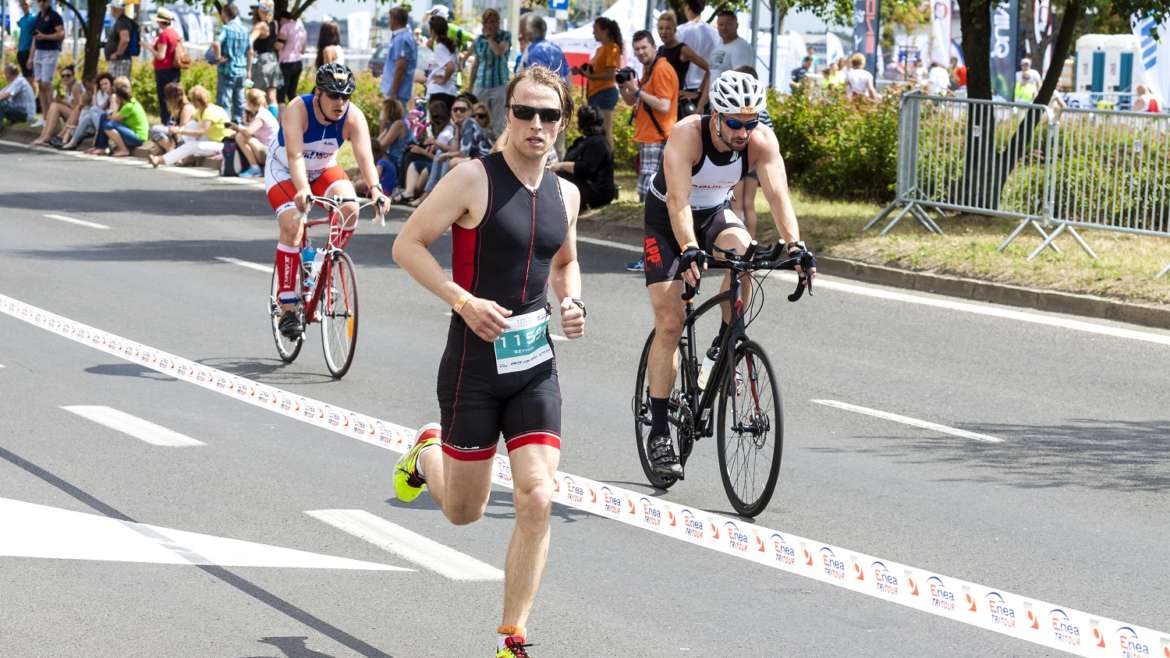Triathlons demand speed, stamina and strength; running, cycling and swimming each command the use of almost every muscle group in the body; these three gruelling events may be a challenge individually, yet are a true test of physical limits when combined.
Those training for a triathlon will likely know all of this, all too well! But how does triathlon training affect muscles unlike any other form of exercise, and why is sports massage an effective training partner that the majority of triathletes are yet to discover?

How triathlon training affects your muscles
Training for a triathlon can appear a complex process – and one that no other singular event can quite compare to; central to which is a focus on cardiovascular endurance. For many, this is where the attention remains, yet as many experts in the field highlight, it is when this is combined with musculoskeletal strength and flexibility that triathletes achieve their full potential.
Training then goes beyond merely practicing and pushing performance in each event of swimming, cycling and running, to exercise that builds strength and develops muscle (after all, it is the muscles that must stand up to the stress of thousands of repetitions throughout a triathlon event).
If done correctly, muscles gain strength and power, without significant mass gain, and become far more effective at working with the cardiovascular system, so they improve upon their effectiveness at harnessing and transporting oxygen.
Regardless of the approach triathlon training is like the event itself: intense, demanding and challenging. Little wonder that then that there’s one common issue faced by triathletes universally: muscle fatigue.
Why sports massage helps during your training
Conquering muscle fatigue and niggles
Muscle fatigue is to be expected as a natural process where muscle fibres are broken down, in order for them to regenerate and rebuild themselves to be stronger, leaner and more capable of the challenges that a triathlon presents. Sports massages can help to ease stress and tension, whilst reducing swelling – all of which helps to overcome fatigue and the many niggles that are associated with it.
Improved circulation
Widely regarded as likely the leading fitness-related advantage to sports massages, improved circulation promotes the better interchange of substances between blood and tissue cells, which in turn goes on to improve tissue metabolism (the ultimate goal of cardiovascular training).
Shortened recovery periods
Proper recovery periods are a non-negotiable when it comes to avoiding injury – and sports massages can help to shorten the recovery time that a triathlete must undergo between training sessions. Most notably sports massages help eradicate the lactic and carbonic acid that builds up during exercise – and that can lead to longer recovery periods at best, or injury at worst.
Overcoming injury (and potentially avoiding them in the first place)
Injuries sustained from triathlon training are far and wide ranging, with the five most common being: Rotator Cuff Tendonitis/Shoulder Pain; Iliotibial (IT) Band Syndrome; Achilles Tendonitis; Patellar Tendonitis and Stress Fractures.
When we look into the reasons behind these injuries, another reason to invest in sports massage emerges – and that’s the fact that each can be picked up upon by a qualified masseur, leading to advice as to how injury can be avoided or treated. The causes behind these injuries include: triathletes who are injured owing to isolated muscle groups that develop too quickly (Rotator Cuff Tendonitis); too rapid a speed of progression (Iliotibial (IT) Band Syndrome); badly fitting equipment (as is the case with Patellar Tendonitis, caused by a poor bike seat fit) and poor recovery periods (stress fractures).



Add Comment